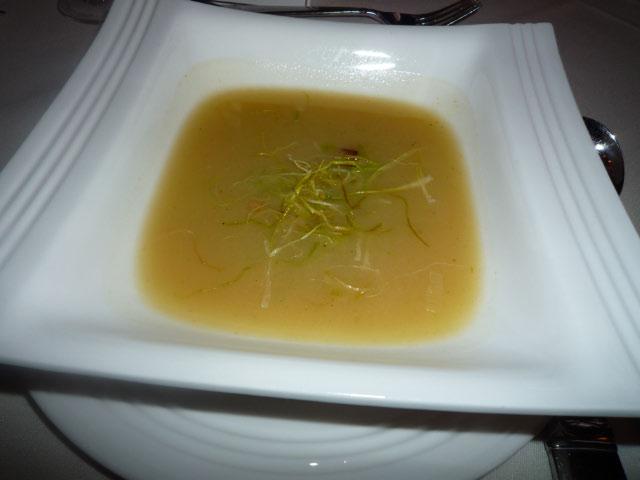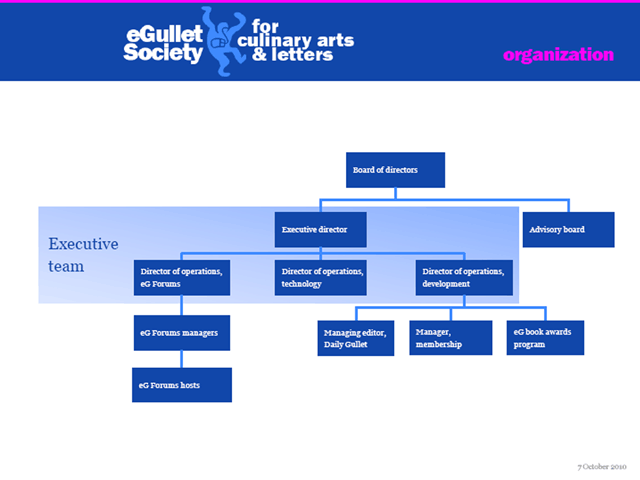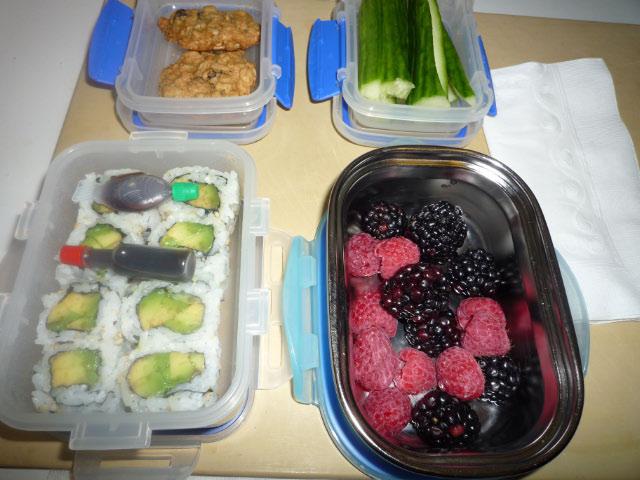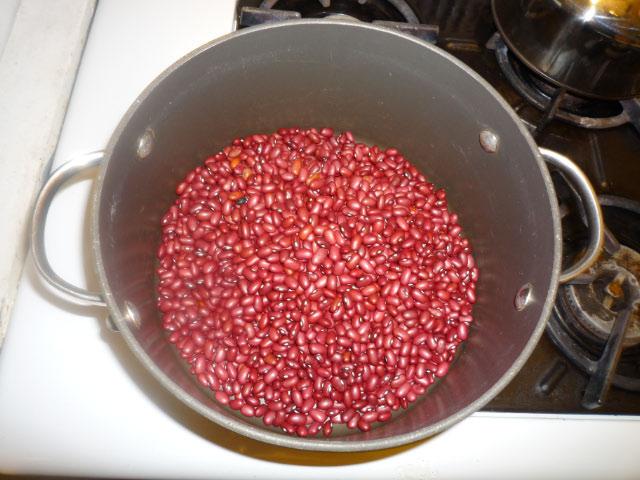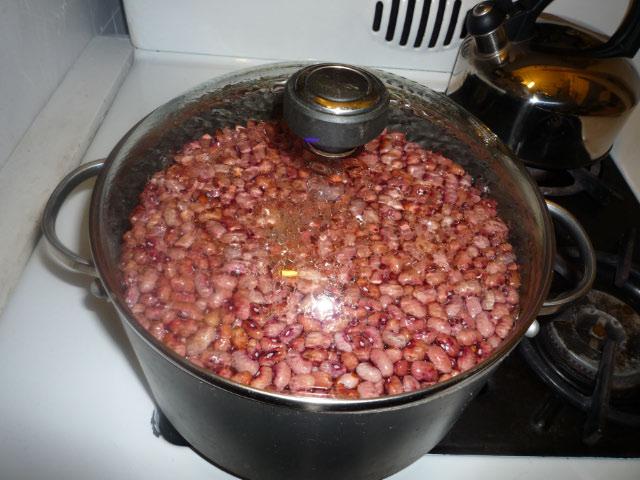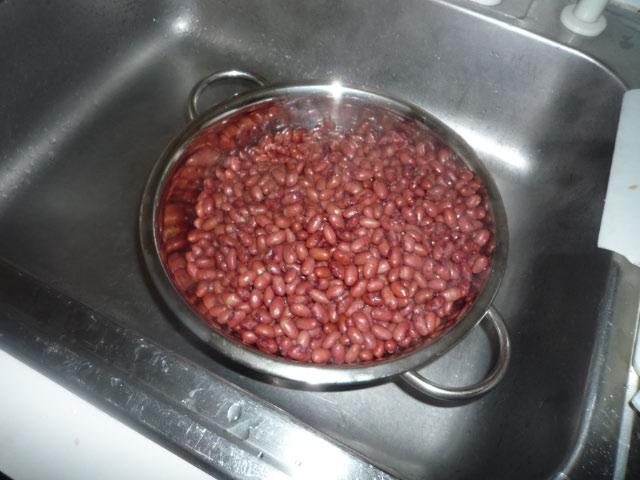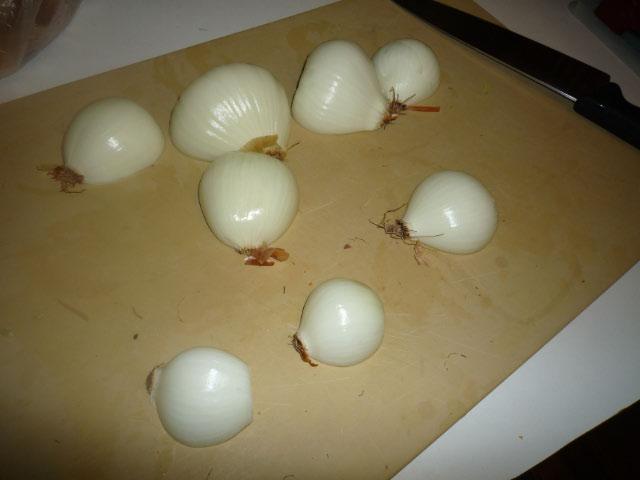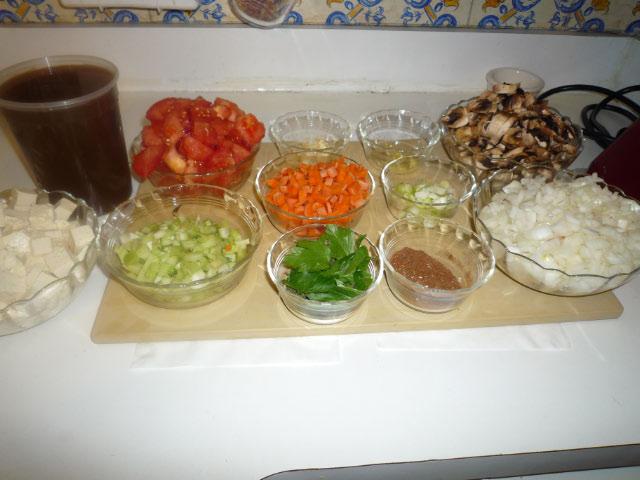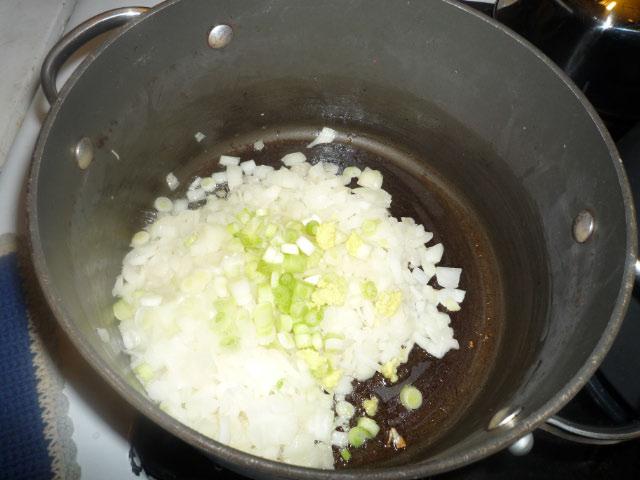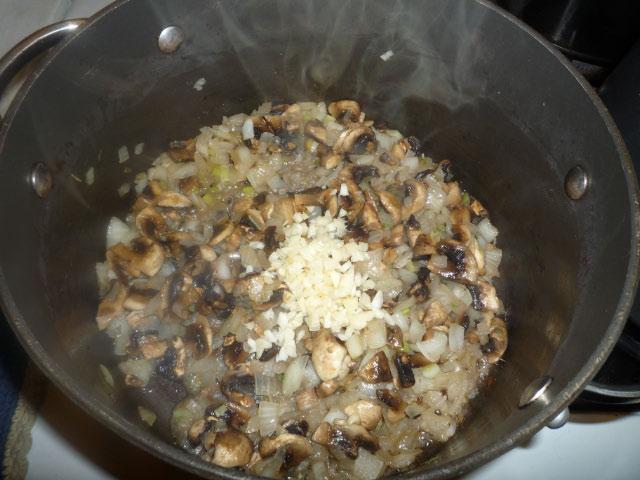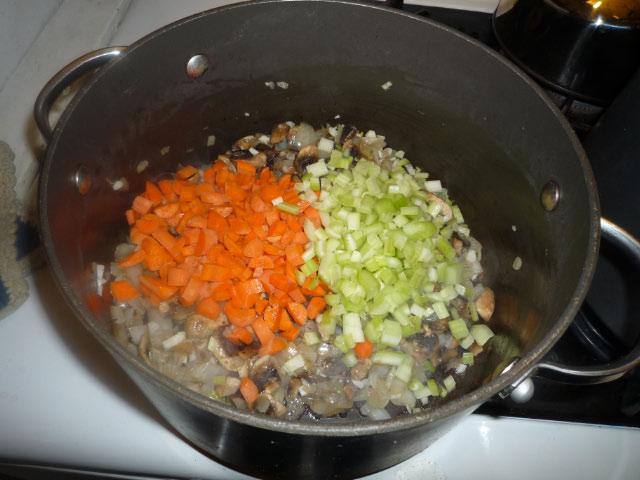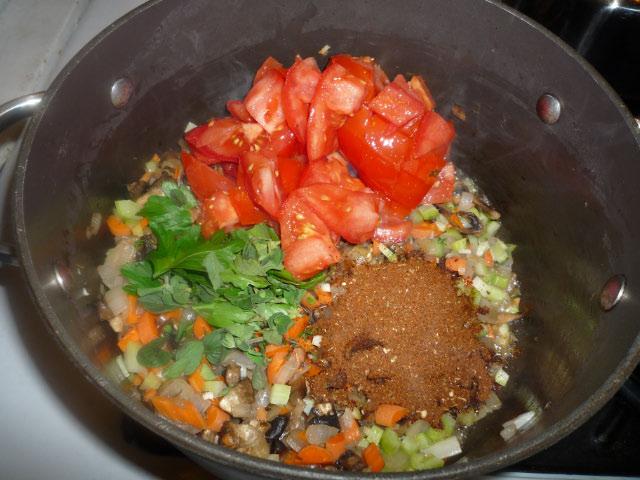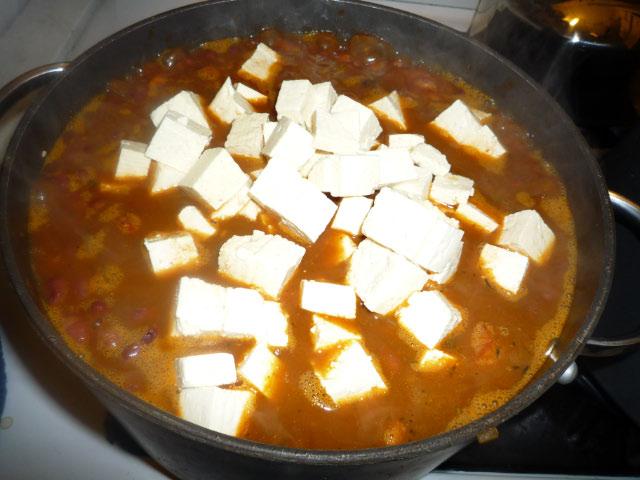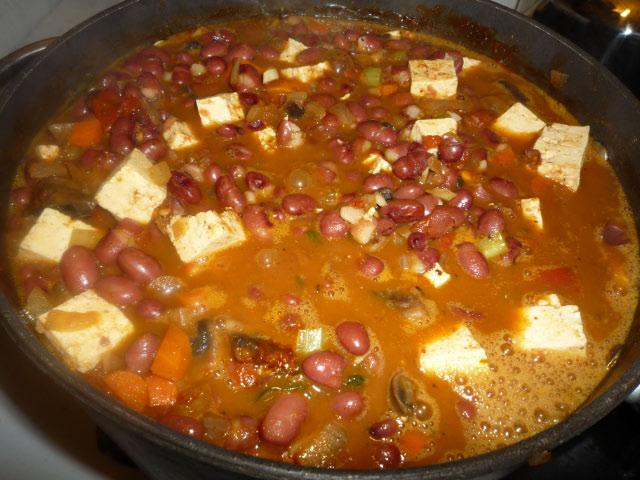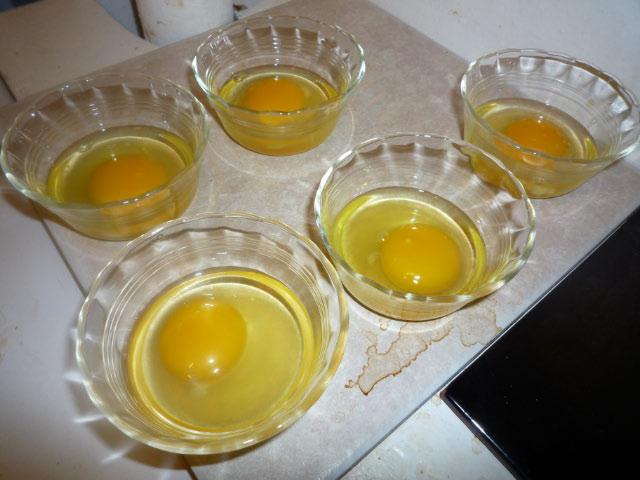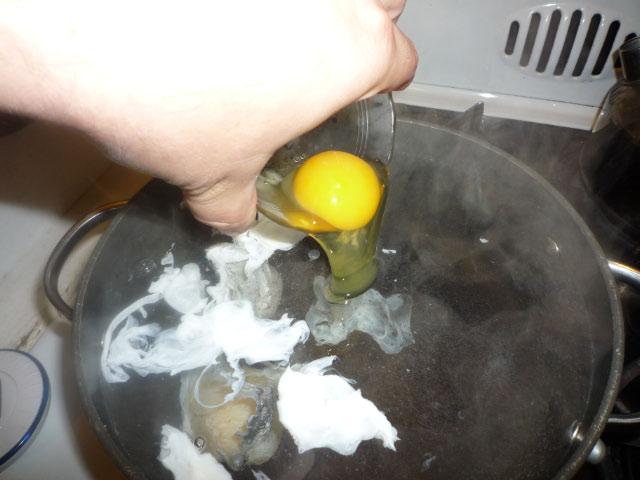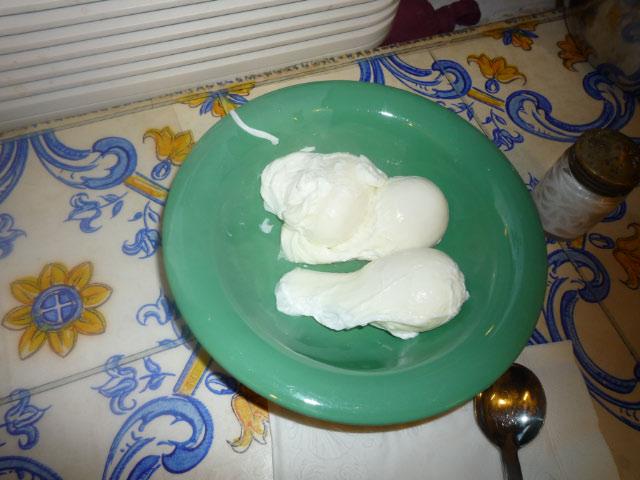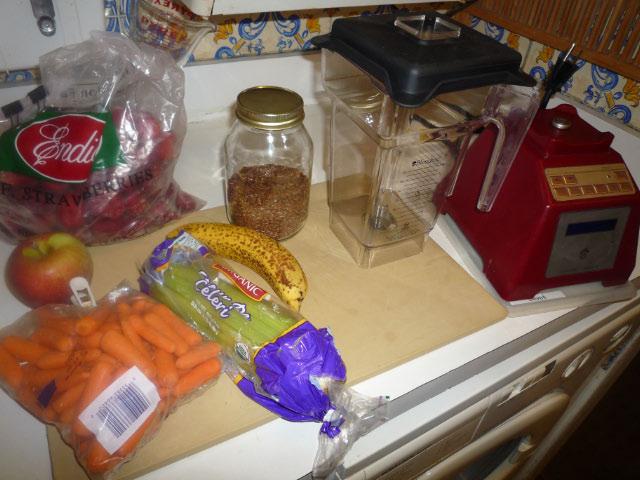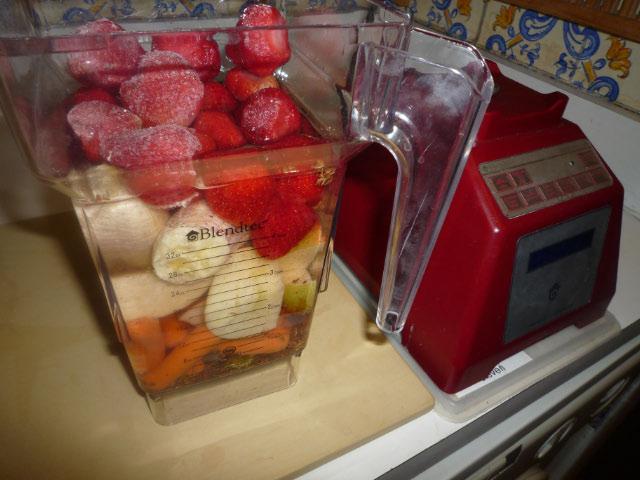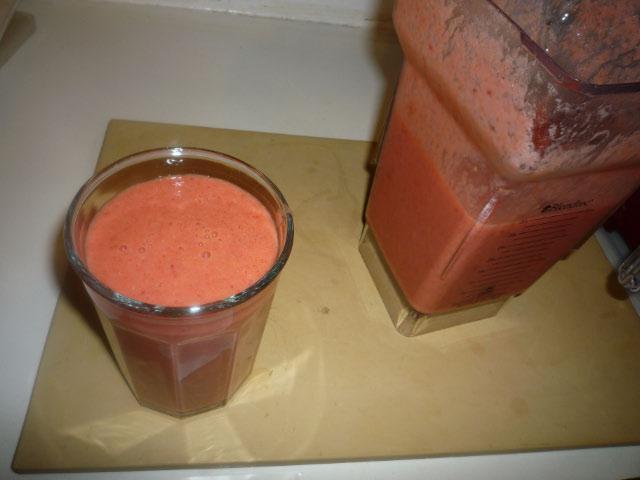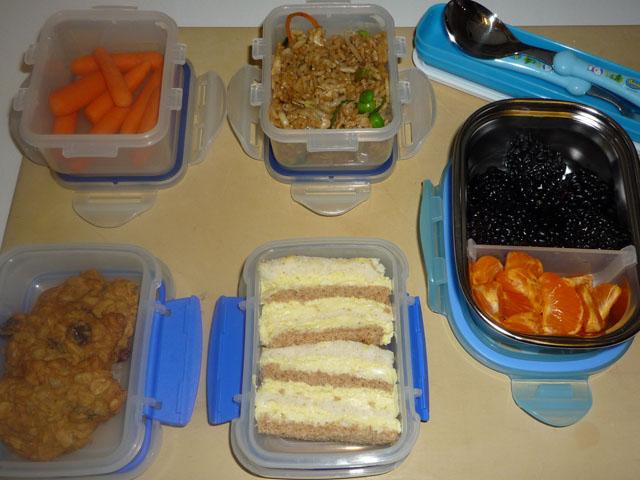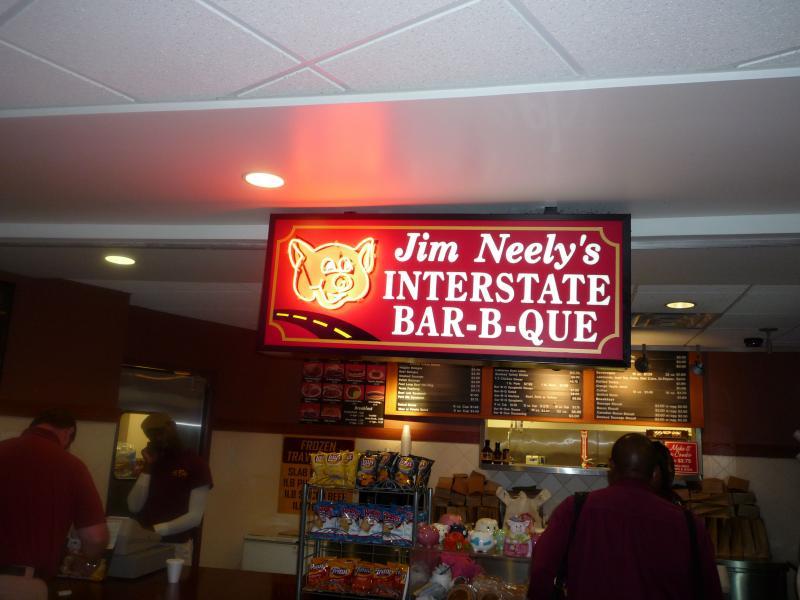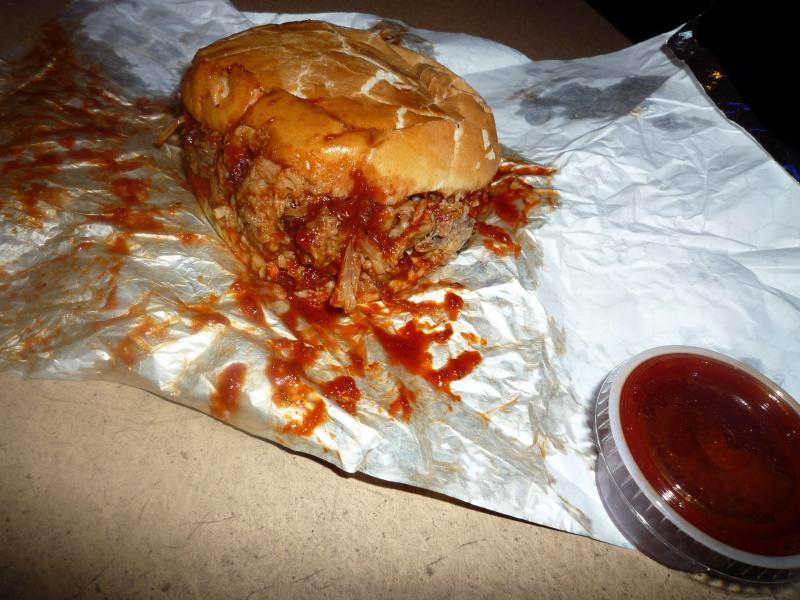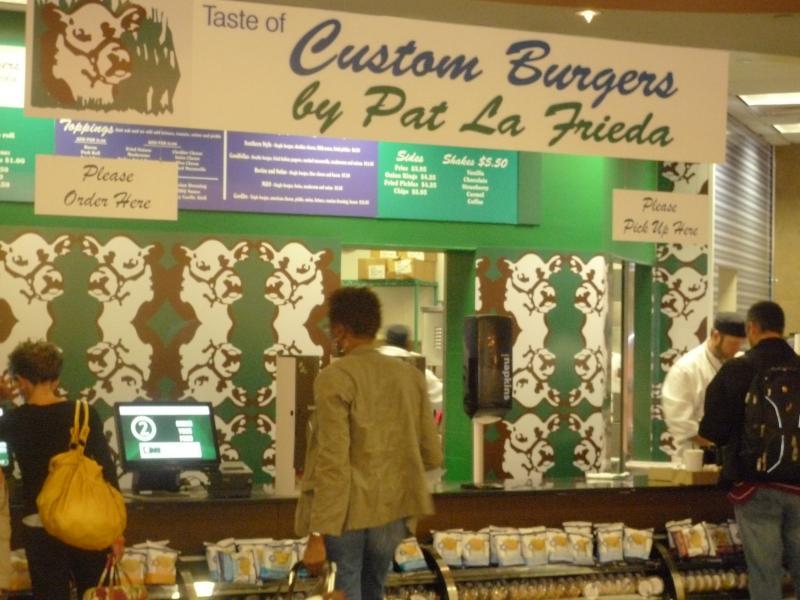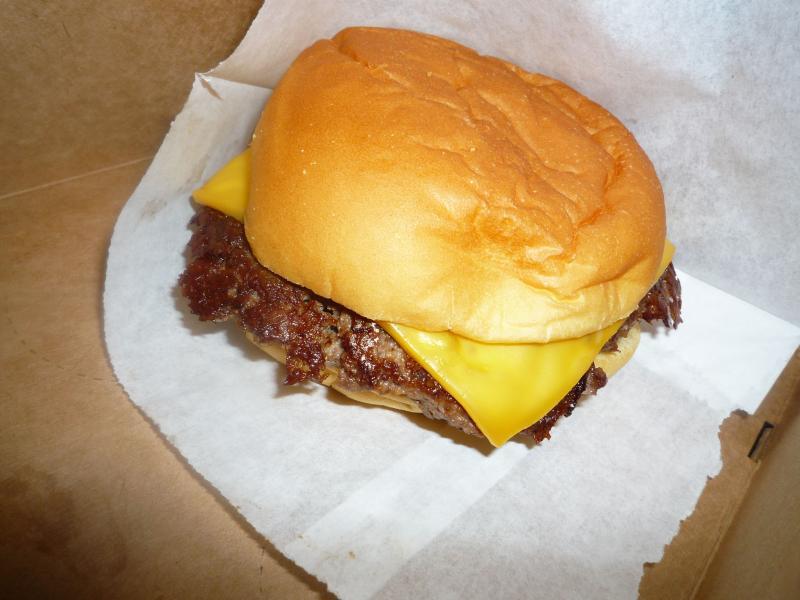-
Posts
28,458 -
Joined
-
Last visited
Content Type
Profiles
Forums
Store
Help Articles
Everything posted by Fat Guy
-
New York Times on New York City's last remaining nut roaster, and why: "There are plenty of places to buy nuts in Manhattan, from Whole Foods to CVS to the occasional subway platform. But if you want them fresh, perhaps even still warm, from the roaster, SP’s Nuts and Candy may well be your only option." http://www.nytimes.com/2010/02/04/nyregion/04nuts.html?_r=1
-
I was thinking the same thing about a Beard biopic, and it was something being discussed around the room today -- albeit probably not by people in a position to do anything about it. I'm not exactly sure where the dramatic tension would come from, but given the success of Julie & Julia coupled with the re-release of Mastering it would have been fitting to re-release Beard's big book with a film about him.
-
(We're working out some technical issues with those photos; please stand by.) Folks, this eG Foodblog is starting to wind down. If there's anything you want to discuss, you should go ahead and post tonight and I'll address your comments as best I can. It will probably be shut down in the morning.
-
John Ferrone was James Beard’s longtime friend and editor. He worked closely with Beard on a memoir, five cookbooks, and over a hundred newspaper and magazine articles. Here, Ferrone talks about what it was like to collaborate with James Beard on his magnum opus, James Beard’s American Cookery. (Reprinted with permission of Little, Brown.) Q. You worked closely with Beard on several cookbooks, including American Cookery. Did you have a chance to test many of the recipes for this book while it was in development? Are there any you still make now? A. During the years I worked with James Beard on cookbooks and articles I frequently kitchen-tested recipes. Each new Beard cookbook enlarged my culinary repertoire. American Cookery was a major contributor. Beard on Bread turned me into a confirmed baker. Menus for Entertaining made me a better party giver. I tested either because I was intrigued by a recipe I was editing or because Beard was away from his kitchen and asked for help, as he did here: “John, I wish you would try [my] recipe for Brownies...and use a few more nuts and use half walnuts and half filberts and see how it goes.” I cook quite simply these days and draw on the bounty of American Cookery less than I used to, but I can think of one dish that lingers on. It’s Piquant Crab Salad (p. 59), an elevated version of cole slaw, which I have used as a stimulating first course for rich holiday meals. Q. What was your working relationship like? Did he teach you a thing or two about your job? Vice versa? A. I began working with Beard on a regular basis in the 1960s, succeeding his Portland friend Isabel Callvert as a freelance editor (not as ghostwriter, as some people believed). In the earlier years he banged out manuscripts on his portable typewriter, not bothering to correct typos or polish his prose. What he presented for editing had the essential information and authority, and plenty of Beard, but needed refining and organization. The trick was to tidy him up while letting his distinctive voice come through. Beard wasn’t the least bit vain about his writing and accepted editing without a protest. A rare author, indeed. When he became more affluent and could afford a full-time secretary, he taped his material, and I was given an impeccably transcribed first draft to work with. This might include instructions on the point he was trying to make: “Try to get some of my feeling into the piece....It should start with ‘I grew up in the Iron Age [of cookery].’” Part of American Cookery was composed at Julia Child’s house in the South of France. Beard had rented the place for an extended stay. I was there for a two-week working vacation. I would get Beard’s manuscript straight from the typewriter. I can still see him sitting there each morning in a kimono, poking away on his portable. Beard taught me everything I know about cooking, American and otherwise. I’m not sure I taught him anything about the use of the English language. There wasn’t much feedback for my efforts, but occasionally he would toss me a compliment: “The manuscript arrived yesterday,” he once wrote me from Provence, “and it seems in much better shape than I thought it could be. I am more than pleased with what you have done and I have done.” Q. Among many classic dishes that remain popular today, American Cookery features a few odd and antiquated foods—like preparations for calf’s brains and “Blushing Bunny” (not a meat dish). Is there anything in the book that has since gone out of fashion that you think ought to be revived? Anything you think Beard would have fought to keep in vogue? A. Beard’s documentary approach to American food allowed him to include dishes such as Asparagus in Ambush and Tipsy Parson that would hardly be found at his own table. He stopped short of treating readers to Flapper Salad (half a peach or pear garnished with shredded carrot and other bits to make a flapper’s face) or Candlestick Salad (half a banana upright on a slice of pineapple, dribbled with mayonnaise). Apart from a few “grotesqueries,” as Beard called them, the recipes in American Cookery are meant to be taken seriously, although many have gone out of fashion, victims of the ban on excess butter and cream or upstaged by ethnic newcomers. But wouldn’t it be heartwarming to see that old party favorite Beef Stroganoff again, maybe with a new twist? Or a grand presentation of a Crown Roast of Pork or Lamb, with an inventive filling for the hollow of the crown? What would Beard have wanted to resurrect? Well, he liked all parts of the pig. He might have sent up a cheer for that rarity, pig’s feet, or put in a good word for an unloved root vegetable, the parsnip, for which he provides a lavish recipe in American Cookery that calls for dollops of Madeira and heavy cream. I’ve served it many a time as an accompaniment to roast lamb. Q. What did Beard tend to eat for breakfast? A. Although Beard championed the Great American Breakfast in his writing, his own morning diet was slim—tea and toast. That was all. Naturally the quality of the bread for toast was important. At home in New York, he settled for an Italian or French bread from Balducci’s or the former Jefferson Market. In St-Rémy-de-Provence he tracked down a loaf to his liking, which he described thus to his food colleague Helen Evans Brown: “It is rough and slightly off-white and has a wonderful crust—not the refined bread that everyone seems crazy for these days, which only lasts about an hour.” That became the bread for my toast, too, during a visit with Beard in St-Rémy. Q. At nearly 900 pages, American Cookery is comprehensive. It’s hard to imagine, but was there more that Beard wanted to include in the book? A. American Cookery was written in no particular order, as Beard continued his investigation of early cookbooks and the compilations of Ladies Aid societies. It just grew, chapter by chapter, and was not assembled into a cohesive book until the end. Each time Beard believed we had reached that point, he or I would think of a missing chapter, and we’d start up all over again. This went on for nearly four years, by which time we were both exhausted and couldn’t squeeze out another word. When it came time to put the mass of material in some order, Beard decided to follow more or less the sequence of a meal, starting with cocktail food. If later he had been asked to fill in any gaps in what one reviewer called his “magisterial epic cookbook,” he might have chosen to enlarge the pasta section, which for Americans in the early seventies was still in the spaghetti and macaroni stage. Q. If there is one recipe or anecdote that you think sums up Beard’s genius, and the mission of this book, which would it be? A. It’s not possible to sum up Beard’s contribution to America’s eating habits with a single achievement. His influence was felt in so many ways. He not only wrote cookbooks and countless food pieces, including a syndicated column, but he conducted cooking classes on both coasts, did food demonstrations throughout the country, appeared on television, developed new products for companies like Green Giant and French’s mustard (for which he has been repeatedly criticized), advised restaurateurs, held seminars on wines, and encouraged up-and-coming chefs. I can’t think of another culinary figure who could begin to match that record. He deserves credit, too, for his skill as a host. His dinner parties and cocktail buffets were legendary and set an example for entertaining in a hearty but elegant style. The cast of characters at these events was made up of food people and old friends. I can remember one such holiday celebration when Beard was eighty and had lost a good deal of weight. A guest handed him a Christmas gift, and as he stood up to accept it, his trousers fell to his ankles. After a second of shock, Beard roared with laughter, and so did all his guests. He was a showman to the end.
-
James Beard's American Cookery, one of the all-time great cookbooks (originally published in 1972), is being reissued by Little, Brown with a foreword by Tom Colicchio. Today the publisher hosted a media lunch at the James Beard House. Several good things came of attending this event: 1. I got to hang with Tom Colicchio for a few minutes. 2. I sat next to Cathy Erway of the Not Eating Out in New York blog and I think I convinced her to be a guest speaker in my food-blogging class next month. 3. I met the marketing manager, Amanda Tobier, and it turned out we went to high school together. So we got to reminisce a lot, no doubt to the annoyance of everyone else at the table. 4. I got a free copy of the book, which is gorgeous, and then I got another one. 5. I ate the best meal I've ever had at the James Beard House. You can't beat some of those old-school recipes. The lunch made me proud to be an American. We started with a half-hour hors d'oeuvres hour. Tom Colicchio, flanked by blonde hair: Photo: Steven Shaw The cooks hard at work preparing some of Beard's recipes: Photo: Steven Shaw The publicist for the book was good enough to send me the recipes for all the things we had at the lunch. I'll include those inline here. So, for hors d'oeuvres we had "Dainty Sandwiches." We then had a superb leek-and-potato soup. Not vichyssoise. This was what you'd add cream to in order to get vichyssoise. Photo: Steven Shaw Next, breaded chicken breasts, glazed carrots and sauteed zucchini. Photo: Steven Shaw Finally, apple pie with enough cinnamon to matter. Photo: Steven Shaw Here's the menu and the book. They did a really nice job on the book. It has no glossy photos -- just text and a few bits of rust-colored artwork -- but it is as beautiful as any book can be. Photo: Steven Shaw Photo: Steven Shaw Also, if you're curious, there's a terrific Q&A with Beard's editor that the Little, Brown people sent me. I'm going to reprint it, with permission of course, in my next post. Finally, I have to add that I think American Cookery is a fantastic book but is actually the second best book by James Beard (of the ones I've seen; not every one but a whole lot of them). In my opinion the best James Beard book ever is James Beard's Theory & Practice of Good Cooking (1977). It's a book that was truly ahead of its time, approaching cookery from the perspective of techniques that can be applied across ingredients. Many of today's technique-oriented cookbooks are descendants of Theory & Practice. I tried to convince Tom Colicchio that his Think Like a Chef is one such book, but I think he thought I was nuts. In any event, I started the campaign today to get Little, Brown to do that one next. Fight with me. Michael Sand is the name of the editor in charge. Write him letters, call him, send him faxes, picket his home -- we can break him.
-
There's a huge variation in nut quality, though. For example, here in New York City everywhere you turn there's a guy selling honey-roasted peanuts, cashews and almonds for $2 a bag. Usually low-quality nuts cooked in rancid oil, these are just not the same thing as the place in Mobile is selling. There's at least one place downtown in the nut-roasting business, Bazzini. I'm not sure if they roast on premises or off, but they have good nuts. And you still see Planter's places on East Coast boardwalks. But what I had in Mobile was a cut above. A choice of sub-categories of peanuts, absolutely amazing quality, not just roasting but also they were deep frying and otherwise making raw products into delicious crunchy snacks.
-

Riverpark (Tom Colicchio's new restaurant)--Any reviews?
Fat Guy replied to a topic in New York: Dining
That sounds like exactly the proffer at Craftbar. How do you think they compare in terms of value proposition? That reminds me of the decision to put the Cafe Gray kitchen between the dining room and the windows overlooking Columbus Circle. -
I wanted to take a moment to familiarize everybody with the current version of the Society's org chart. There are three members of our executive team in addition to me. Each bears the title director of operations for a given division or as we call them "segments" (like the segments of an orange): There's the eG Forums segment, headed by Chris Amirault -- that's the segment most of you reading this are most concerned with, and it's by far our largest segment. But it is a segment, which is to say the Society and eG Forums are not synonymous. Rather, the Society offers eG Forums as a program service. Chris is responsible for the eG Forums managers, who in turn are responsible for the eG Forums hosts. Then we have the technology segment, headed by Chris Hennes -- of course, technology touches everything we do, and Chris both does the dirty work of keeping the lights on and spends a lot of time and energy thinking about and implementing improvements. At present Chris is the founding and only member of the technology segment. We are hoping to recruit some volunteers to help him out, though. Finally there's the development segment, headed by Dave Scantland -- Dave has a mix of responsibilities under the heading of development: marketing, membership, the Daily Gullet (our literary journal) and the forthcoming book awards project, not to mention he also functions as our creative director, graphic designer and all-around self-help guru. I hope you have enjoyed this tour of the fascinating inner workings of the Society. Should you wish to print out this org chart and tape it to the side of your monitor as a helpful reference, we hereby grant you permission to do so.
-
I know that back in the day there were thousands of nut-roasting operations all across the USA -- kind of like Starbucks today or cookie stores a couple of decades ago -- but today a shop that roasts nuts on premises is a novelty. There are some here and there -- many used to be part of the Planter's chain and are now independently operated -- but not a lot. The place is Mobile, however, seemed to be a cut above. I don't think they have a mail-order operation, unfortunately, otherwise I'd be all over ordering many pounds of those Virginia Redskin peanuts for the holidays.
-
The cookies pictured above are from a batch my mother made last week. I actually sent him with three yesterday and two came back uneaten, so I sent those two today. When reusable, non-perishable stuff comes back uneaten I usually re-pack it the following day. Most of the time it gets eaten the second time around. If it doesn't, it goes in the trash. Other cookies in the lunches I've packed over time and logged on the Bentos topic are, in many cases, made by my wife or, on occasion, by various professional producers such as the nearby Levain bakery where they make the best cookies I've ever had. The cookies are never made by me. That's not my department. Once in a while I use a packaged cookie, like a Mallomar, but that's pretty rare -- I prefer not to do it but am not doctrinaire in my opposition. I do try to include cookies when possible, though. In general I try to pack a fruit item, a vegetable item and a sweet item in addition to the main item (which usually involves starch and protein). It doesn't always work out that way but that's the goal.
-
-
Anna: So glad the recipe worked out for you. Pam: I had high hopes that the birthday party would offer some photo-worthy, awful, birthday-party food. Alas, because it was a mid-afternoon party, there wasn't much served in the way of food. Just some perfectly acceptable cupcakes. The party was at the Build-a-Bear Workshop. Each kid got to choose a teddy bear, stuff it, select clothes, fill out a birth certificate, etc. It was pretty cute, though I think I'll be fine if I never set foot in that place again as long as I live. I never really had dinner tonight. I was considering a press preview at a restaurant downtown but didn't have the strength and wasn't convinced it would have any value. We were low on groceries in the house, so I went shopping at Fairway and wound up getting about six big bags of groceries. Dinner consisted of grazing on everything from Trader Joe's dark chocolate, to Stacy's pita chips, to some of those Virginia Redskin peanuts from Mobile, Alabama. After everybody else went to bed, I embarked upon a cooking project. I typically would do this sort of thing on Sunday -- both the shopping and the cooking -- but the travel schedule shifted everything around. The request from Ellen and PJ was for vegetarian chili. I allowed a number of the ingredient decisions to be dictated by what was on hand in the refrigerator and freezer, and I bought some ingredients to supplement. First I cooked 2 pounds of red beans using the 90-minute no-soak method that has become my standard procedure. Although, I did it on the stovetop not in the oven -- it doesn't make much difference and the stovetop was more convenient today. Photo: Steven Shaw Photo: Steven Shaw Photo: Steven Shaw I had several mismatched onions kicking around, so I decided this was a good opportunity to use them all. Photo: Steven Shaw Because I knew I'd be sharing with you all, I did a proper mise-en-place. Photo: Steven Shaw Then I built the chili, ingredient by ingredient, doing my best to make an edible vegetarian (vegan, actually) chili. Photo: Steven Shaw Photo: Steven Shaw Photo: Steven Shaw Photo: Steven Shaw Photo: Steven Shaw Photo: Steven Shaw It needs a little more time on the stove, then I'll cool it and pack it up for use throughout the remainder of the week. Tomorrow: Lunch at the James Beard House with Tom Colicchio. Maybe.
-
Lunch today was a Chobani Greek-style pomegranate yogurt (I'm not sure how the nation survived 200+ years without Chobani and Fage yogurt) and one of my dwindling inventory of Connecticut apples.
-
It also varies by fruit. But Dole is solid across the board. I see the Dole packages in kitchens of places like fancy hotels, where they need to provide quality fruit year-round. (Dole advertises those frozen fruits relentlessly in Food Arts magazine, which is a good sign -- the advertisers in Food Arts tend to be pursuing serious chefs who care about quality.) Myself, I usually do a mixture of frozen and fresh. Like, I can't imagine ever needing to buy a frozen banana. Bananas are cheap and, even if you get them at the world's worst store, they ripen into something pretty edible. Same with apples. The apples that suck for eating out of hand, like red delicious, are just fine for smoothies. This time of year I have the benefit of great local apples -- the one I used today was a Braeburn I picked in Connecticut -- but I'd be lying if I said I could tell the difference in a smoothie. This big category that's almost always better frozen, if you use a quality brand, is berries. Unless it happens to be the local season for a particular kind of berry, and your market actually carries the local product, you're better off with Dole.
-
I think the Dole frozen fruits are excellent -- better on average than fresh, once you use them in a recipe (as opposed to eating them straight). The Dole products are not very cost effective, though. I get that 5-pound bag of strawberries at Fairway for cheap and they're pretty good. I think the best compromise in terms of price and quality is the Richfood brand. Cheaper than Dole, almost as good. If money is no object, Cascadian is good but you're paying for the dubious benefits of organic. Trader Joe's frozen fruit is also pretty good, and well priced.
-
I fill the pitcher to the bend, which I think comes out at just under 1.5 quarts, enough for 3 x almost-16-ounce glasses. That's the quantity I need to curb my appetite for the day. A couple of years ago, I met this guy Kevin J. Leville, CEO of Eat Right America. I speak all the time to people in the nutrition field as well as people with big ideas about obesity and public health. Most of them are well-meaning but their ideas can't withstand even basic scrutiny. Kevin was the first person of this type I'd ever spoken to who I thought had it all figured out, where I couldn't just poke holes in everything he said. The smoothie strategy comes from him and his partner, Dr. Joel Fuhrman. Their emphasis is on nutrition, not weight loss, but better weight management is a pretty much inevitable byproduct of their approach to nutrition. Well, not inevitable, but even I've lost a few pounds. More importantly, I think having that big hit of fruits and vegetables (and flax) in the morning has helped me feel more vital overall.
-
Breakfast for the rest of the family was poached eggs, again using the bowl method. Photo: Ellen R. Shapiro Photo: Ellen R. Shapiro Photo: Ellen R. Shapiro After school dropoff, I made my breakfast: a smoothie. This week has been abnormal in that my travel schedule kept smoothies mostly out of reach. But in a normal week I make a large smoothie almost every day for breakfast, which on a good day keeps me satiated through a light lunch and the afternoon. For the past few months I've had a Blendtec Total Blender to help power through this task. Before that I had a Vita-Mix, which I ruined, and before the I labored with a Waring bar blender that was just barely adequate for smoothie making. Today I used flax seed, carrot, apple, celery, banana and frozen strawberries. Photo: Ellen R. Shapiro Photo: Ellen R. Shapiro Photo: Ellen R. Shapiro
-
Here's the lunch I packed for PJ this morning: Photo: Ellen R. Shapiro I'm off to make breakfast for the family, then take our son to school. I'm not sure what the day will bring after that. I have no formally planned activities until a luncheon I'm supposed to attend tomorrow. So we'll see if anything transpires. I'm sort of hoping nothing does.
-
Dinner tonight was routine. We went as a family (including my mother and two of her friends) to Empire Szechuan on Columbus Avenue. I've been going there since they opened in the early 1980s and, without question, it's the restaurant I've eaten more meals at over time than at any other restaurant, most likely more than at the next 9 in my top 10 combined. If you include takeout, we're probably talking about an average of once a week for nearly 30 years, minus some years for college and such. Call it a thousand times I've eaten there. I didn't take any photos. The food is better-than-average Americanized Chinese. The restaurant works because there's something for everyone in the family, they make some things very well, they treat us like royalty, and on account of decades of experience I'm really good at ordering (nobody has ever said to me, "Gee, Steven, I'm really glad I ignored your ordering advice and got dish X instead -- it was awesome."). We had cold noodles with sesame sauce. I think they do this dish better than most anybody. It's a minimalist version, without a million ingredients in the sauce. I like to order it with the sauce separate and mix it myself at the table. We had two kinds of dumplings: pork and vegetable. There are a lot of places that make better dumplings than Empire Szechuan (the skins are indelicate) but Empire Szechuan makes ones that are plenty good enough. There were some takers for soup (their hot & sour soup is noteworthy for being vegetarian yet quite good) and a little sushi (like many Chinese restaurants these days, Empire has a sushi counter so you can mix and match Chinese and Japanese stuff). We had chicken with basil and black bean sauce, chicken with string beans. jumbo shrimp with walnuts, chicken fried rice, and vegetable moo shu. For dessert at home I had an apple and a banana -- I'm in fruit-and-vegetable withdrawal after a few days in Alabama.
-
Note: the Sarabeth's house bread recipe is now corrected. The missing lines occurred on converting PDF to text.
-
It requires no skill but a lot of patience. I'll try to make some soon so I can post a little photo tutorial.
-
The last time I did serious experimentation with duck fat frying, I was working on latkes. What I found was that with 100% duck fat it was impossible to get good crispness and golden brownness without burning the oil, so of necessity the end product was limp. The same held for 90% duck fat, 80% duck fat ... it wasn't until we did a 50/50 mix of duck fat and corn oil that we got the right outcome. I don't know if that holds for french fries or not. By the way the fry cook told one of our group that they don't use 100% duck fat -- they cut it with some standard frying oil or shortening. But I guess they're not getting the right ratio. Or they're doing something wrong, unrelated to oil composition. Or they prefer limp fries. Some people do. Not me. Here are the promised photos from Jim Neely's in the Memphis airport. Photo: Ellen R. Shapiro Photo: Ellen R. Shapiro And of Pat LaFreida's place at LaGuardia. Photo: Ellen R. Shapiro Photo: Ellen R. Shapiro
-
On my way out of LaGuardia airport I took the opportunity to right another airline-generated wrong from earlier in the trip: I grabbed a burger at the Pat LaFreida burger place. I came with a chip on my shoulder because I have never bought into all the hype surrounding Pat LaFreida's ground beef. I also had several immediate negative reactions to the place. First, there is no human to take your order. You key it in to a touch screen. The computer is unwieldy and, worse, relentlessly tries to upsell you on wildly overpriced sides and shakes. Then you wait in another line for your food. Then you wait in line, managing your food and your carry-on bags, to pay at the food court's central cashier where they again try to upsell you on drinks and such. There is inadequate seating and everywhere you try to sit a TSA officer shoos you away. But the burger was fantastic: salty, beefy, juicy -- as good a burger as I've ever had in the thin-griddled style. The single cheeseburger like I had costs US$4.75 plus tax. At first I thought it was a lot but then I thought about something Ferran Adria said the other night. He said "A good hamburger costs seven dollars." (Given the audience I took that to mean that a restaurant needs to charge $7 in order to serve an economically viable, high-quality burger.) "But people won't pay that much for a burger, even though they'll pay more than that for packs of cigarettes that kill them." So all things considered I should have ordered two.
-
It finally happened: I got my barbecue. Those of you who have been following along since the beginning of this adventure may recall that, on account of my departure delay at LaGuardia, I was robbed of my opportunity to eat barbecue in the Memphis airport. I thought that would be a permanent state of affairs because my return connection allowed only 25 minutes for the transfer and, to make matters worse, was to happen at 7:45 in the morning. But my flight got in about 15 minutes early -- an eternity in flight-connection time -- and to my great surprise and delight Jim Neely's Interstate Barbecue was open for business. Nobody there thought it the least bit strange when I ordered a large chopped pork sandwich at dawn. (They call it chopped; I'd call it pulled.) On account of my equipment restrictions in transit I won't be able to offer you a photo of this glorious work of sandwich art until I return to headquarters this evening. That's right after I spend a couple of hours of quality time at a kids' birthday party at the Build-a-Bear store on Fifth Avenue and then have dinner with my wife, son, mother, mother's friend and mother's other friend.
-
Before dinner last night, we had a tour of the Battle House Hotel. I'm going to hold off on reporting about that, though, until I can collect a few of the archival photos the hotel has available. So more on that eventually. It's now almost 3:30am here and I have to depart at 4:30am for the airport. So I'll be powering down for the morning and most of the middle part of the day. Talk to you on the other side.


